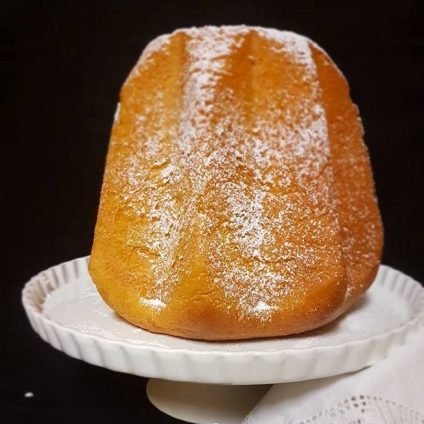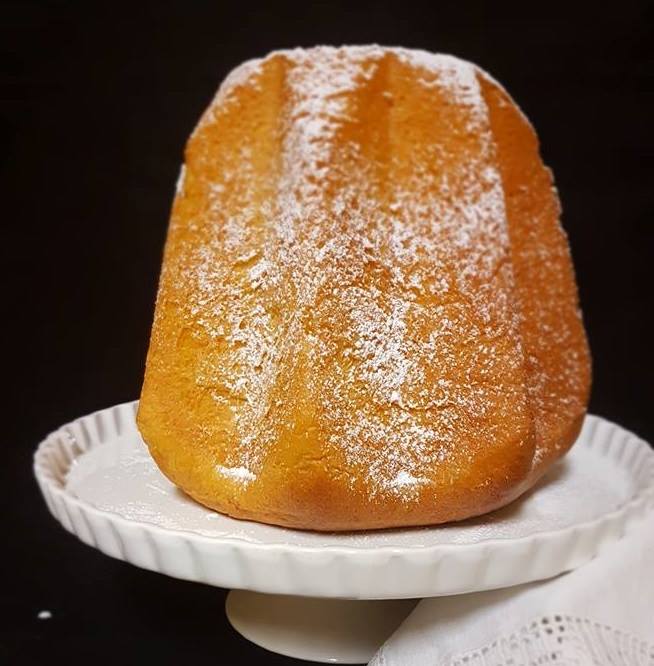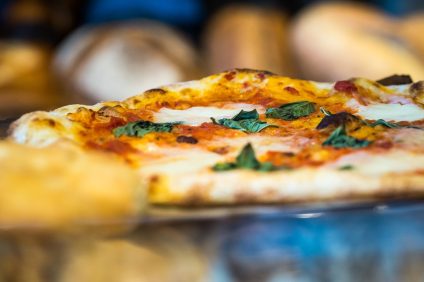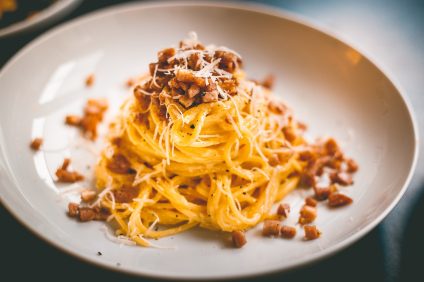Pandoro Giorilli
Antonella Audino

The traditional pandoro Double dough by the master Giorilli
Time of realization: 24 hours between leavening and preparation
Degree of difficulty (1 to 5): 4
Die from 1 kg pandoro
Use of Planetary essential
Using the hook or spiral
probe thermometer that will be used to measure the temperature of the dough and the final cooking temperature
Ingredients
1st dough:
80 g mother yeast
95 g sugar
260 g whole eggs
110 g Bavarian butter
315 g flour from W360 to 400
2nd dough:
All the first dough
55 g flour from 350 to 400 w
5 g salt
4 g diastatic malt
55 g cold egg yolks
20 g fresh cream
Emulsion:
110 g Bavarian butter
55 g sugar
50 g cocoa butter
10 g honey
1 tsp Vanilla extract
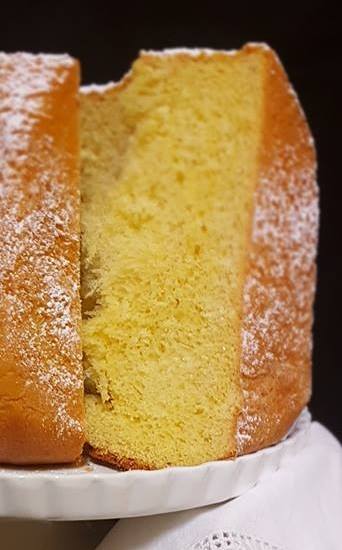
Method
Before approaching the preparation of naturally leavened panettone and pandoro we must begin the preparatory phase a week before pampering our sometimes moody and sensitive yeast and therefore it is advisable to refresh it often in the days before the dough and the day we will make the first. dough, have three consecutive refreshments and maybe a little bath at the beginning of the day.
Baby bath:
Dissolve 1 g of sugar in 1 liter of water and add the sliced yeast for 20 minutes.
Squeeze, weigh, if we have wet 100 g of lm which after the treatment weighs 120 g, we will insert the measuring water to reach 45 g then only 25 g and 100 of flour to maintain the proportion 100 g lm 100 g flour 45 g water .
Always grow the lm in the heat, that is 28 ° C in a tall, narrow container that gives you push, covered with film and check that it doubles in 3 hours.
At the end of this procedure we will have the yeast ready and in force to be used in the recipe.
An hourly table for preparatory refreshments could be:
8:00 am 12:00 pm 16:00 pm 20:00 pm first dough
After the preparation of the first dough, start the preparation of the emulsion which needs 24 hours to mature and release all its aroma, once ready, store in the fridge with cling film.
An important thing in the management of this dough is not to exceed 26 ° C of the dough, so equip yourself with a probe that will be used not only in cooking, but to check the dough from time to time and if you see that you have breached, insert the mug in the fridge for a few minutes.
1st dough
Put the flour, the chopped sourdough and almost all the cold eggs from the fridge into the bowl of the mixer, set aside about 50 g.
Use the hook and run the planetary mixer for about 10 minutes until it forms a smooth dough.
Gradually add the cold eggs left in the fridge until they are used and knead until completely absorbed.
Add the sugar several times and then the ointment butter in several times (it must be left at room temperature for a couple of hours before use, or softened in the microwave for a few seconds).
Be careful not to work the dough too much, measure the temperature with the thermometer and if it approaches 26 ° C, put the dough in the freezer for 10 minutes before proceeding, the same goes for the second dough.
Knead until the mixture is smooth and elastic.
Take the dough from the bowl and place on a pastry board, mix without using flour or butter and place in a tall and straight container where we will mark the height because the dough must triple in twelve hours, so it must grow twice from the mark. (1 + 2). If you do not have such a container, a bowl and a SPIA container will be fine, or in a glass / jar we will place a ball of dough marking the edge, we will leave this container next to the bowl and we will adjust with the indicator that will behave in the same dough way.
Leave the dough at a constant temperature of 28 ° C and after 12 hours it will be tripled, if not, wait until that moment otherwise the rush will compromise the success of the pandoro and with the second dough even more loaded with fats and eggs and sugars it will rise. even more slowly.
2st dough
Before starting the second dough, leave the first dough in the fridge for 15 minutes to lower the temperature, as well as bowl and hook, all this will only do good to the seal of our dough.
Remove the dough from the fridge, pour half into the bowl with all the flour sifted with the malt, start at minimum speed and then raise and mix the mixture well.
When the mass is smooth, add the other half of the first dough and the salt.
When the dough is strung, add the egg yolks that we will have kept in the fridge several times to lower the temperature of the dough and work until completely absorbed.
Before adding the previously prepared emulsion we must have a perfectly strung and elastic dough.
Remove the emulsion from the fridge one hour before starting with the second mixture so that it is cool and creamy.
Add the emulsion several times without ever losing the string and turning often so that the ingredients are incorporated more easily and the dough dries at the same time.
What is stringing:
the sticky dough will begin to detach from the walls of the planetary mixer, creating filamentous bonds between the bowl and the leaf, gradually increasing in quantity until it becomes a tough and elastic dough.
If you pull a flap, the dough will not tear.
Enlarging it, rather than tearing itself apart, it will extend into a veil. That is the gluten structure, the gluten mesh, the net, which gives structure to our dough.
After all the emulsion, adjust the consistency of the dough and add the cream slowly.
With the help of a tarot, tuck inside the bowl without exceeding, let it rest for 30 minutes covered with film, at about 28 ° C.
After this time, overturn the mass on the surface and let it point to the air for about 15 minutes.
Weigh the necessary quantity according to the available molds.
A 10% more weight is always inserted compared to the size of the mold to compensate for the evaporation of water during cooking.
This dose is for a one kg pandoro, so insert 1100 g of dough into the mold and the recipe is for a total of 1200 g, because along the way you always lose something, and if you don't abound you risk finding ourselves with insufficient weight.
After pezzato, form the dough with the pirlatura method and let it stick for 15 to 30 minutes this so that the mass dries and gains strength before proceeding to the second pirlatura in which we will find a more tenacious and sustained dough.
Pirling a dough means rounding it by turning it in your hands or on the work surface giving it a regular spherical shape, in this way a regular growth is given to the dough during leavening.
Pirl then again and place the dough inside the mold perfectly buttered in all its parts by placing the closure on one side of the mold.
Cover with cling film and let our pandoro rise at a possibly constant temperature of 28/30 ° C for about 4/6 hours.
If you do not have a particularly hot chamber, it is convenient to let it rise in the oven off with only the light on, after making sure that the temperature in this way does not rise too out of control or in a closet leave a stove with a thermostat that turns off at 28 ° C to restart as soon as the temperature drops, then the blast chiller with leavening function is certainly optimal.
The pandoro is ready to cook when it reaches 2 cm from the edge of the mold. Turn on the oven at 150 ° C in static mode, leave the pandoro at room temperature uncovering it from the film so that a thin dry film forms on the surface and before baking with a stick or a steel wire make (if we prefer) some small holes on top the dome of the pandoro to avoid the formation of large air bubbles during cooking.
It is cooked when it reaches the heart, that is in its center, the temperature of 94 ° C.
The probe set at 93 ° C must be pierced in the corner between the tips towards the center, therefore obliquely.
It will take about 50/55 minutes,
The last 10 minutes of cooking, manage them with the oven door ajar, simulating the open valve of professional ovens.
Once our pandoro is taken out of the oven, it must remain in the mold for at least an hour.
Only then will it be possible to turn it over and remove the mold
Let it cool down for at least 10 hours before packing it.
The products with sourdough have a much longer shelf life than those prepared with brewer's yeast and this pandoro will keep for a month always soft and soft as just made, provided that the dough has been handled well, if the right ones have been observed. temperatures, if it is strung well and if it passes the final test of the veil.
Store in food bags where we will make a few holes with a pin for light transpiration.
By my choice I am opposed to alcohol in bags, I produce at home just to make sure fragrant and delicate products and that smell bothers me a lot, but it has no contraindications if you prefer to use it.
